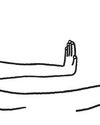
In 1926, Virginia Woolf wrote an essay about an innocent young art form: the silent cinema. Woolf argued that the movies were too literary. They would have to find their own artistic language, since they were currently imprisoned in a system of dead convention and mechanical semaphore: “A kiss is love. A broken cup is jealousy. A grin is happiness. Death is a hearse.” Once in a while, she had found herself in a darkened cinema with an apprehension of what film might achieve. “Through the thick counterpane of immense dexterity and enormous efficiency one has glimpses of something vital within,” she wrote. “But the kick of life is instantly concealed by more dexterity, further efficiency.”
In the same year, the English writer W. Somerset Maugham published “The Casuarina Tree,” a book of six short stories. Maugham was at the height of his success, as a great, and greatly rewarded, writer of immense dexterity and enormous efficiency. As his biographer Selina Hastings writes, “For much of his long life”—he died in 1965, at ninety-one—Maugham was “the most famous writer in the world.” He had the kind of celebrity that now attends actors, musicians, and criminal politicians. Wherever he went, his spoor was tracked by readers and journalists.
This story is from the {{IssueName}} edition of {{MagazineName}}.
Start your 7-day Magzter GOLD free trial to access thousands of curated premium stories, and 9,000+ magazines and newspapers.
Already a subscriber ? Sign In
This story is from the {{IssueName}} edition of {{MagazineName}}.
Start your 7-day Magzter GOLD free trial to access thousands of curated premium stories, and 9,000+ magazines and newspapers.
Already a subscriber? Sign In

BADDIE ISSUES
\"Wicked\" and \"Gladiator II.\"

LET'S MAKE A DEAL
\"Death Becomes Her\" and \"Burnout Paradise.\"

ANTI HEROES
\"The Franchise,\" on HBO.

FELLOW-TRAVELLERS
The surprisingly sunny origins of the Frankfurt School.

NOW YOU SEE ME
John Singer Sargent's strange, slippery portraits of an art dealer's family.

PARIS FRIEND - SHUANG XUETAO
Xiaoguo had a terror of thirst, so he kept a glass of water on the table beside his hospital bed. As soon as it was empty, he asked me to refill it. I wanted to warn him that this was unhealthy - guzzling water all night long puts pressure on the kidneys, and pissing that much couldn't be good for his injury. He was tall, though, so I decided his insides could probably cope.

WILD SIDE
Is Lake Tahoe's bear boom getting out of hand?

GETTING A GRIP
Robots learn to use their hands.

WITHHOLDING SEX FROM MY WIFE
In the wake of [the] election, progressive women, who are outraged over Donald Trump's victory at the ballot box, have taken to social media with public, vengeful vows of chastity. - The Free Press.

DEADLINE EXTENSION
Old age, reborn.